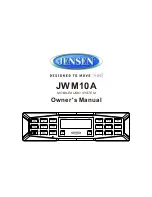
D14128.03—JULY 2009
57
Codec C90
System Integrator Guide
Contents
Introduction
Getting Started
Interfaces
About the API
xConfiguration
xCommand
xStatus
Cameras
Appendices
Contact us
xConfiguration H323 Profile [1..1] Gatekeeper Discovery:
<Manual/Auto>
Determines how the system shall register to a H.323 Gatekeeper.
Manual: The system will use a specific Gatekeeper identified by the Gatekeeper’s IP-address.
Auto: The system will automatically try to register to any available Gatekeeper. If a Gatekeeper responds
to the request sent from the codec within 30 seconds this specific Gatekeeper will be used. This requires
that the Gatekeeper is in auto discovery mode as well. If no Gatekeeper responds, the system will not use a
Gatekeeper for making H.323 calls and hence an IP-address must be specified manually.
Example:
xConfiguration H323 Profile 1 Gatekeeper Discovery: Manual
xConfiguration H323 Profile [1..1] H323Alias E164:
<S: 0, 30>
The H.323 Alias E.164 defines the address of the system, according to the numbering plan implemented
in the H.323 Gatekeeper. The E.164 alias is equivalent to a telephone number, sometimes combined with
access codes.
Format: Compact string with a maximum of 30 characters. Valid characters are 0–9, * and #.
Example:
xConfiguration H323 Profile 1 H323Alias E164: “90550092”
xConfiguration H323 Profile [1..1] H323Alias ID:
<S: 0, 49>
Lets you specify the H.323 Alias ID which is used to address the system on a H.323 Gatekeeper and will be
displayed in the call lists. Example: “[email protected]”, “My H.323 Alias ID”
Format: String with a maximum of 49 characters
Example:
xConfiguration H323 Profile 1 H323Alias ID: “firstname.surname@company.
com”
xConfiguration H323 Profile [1..1] PortAllocation:
<Dynamic/Static>
The H.323 Port Allocation setting affects the H.245 port numbers used for H.323 call signalling.
Dynamic: The system will allocate which ports to use when opening a TCP connection. The reason for doing
this is to avoid using the same ports for subsequent calls, as some firewalls consider this as a sign of attack.
When Dynamic is selected, the H.323 ports used are from 11000 to 20999. Once 20999 is reached they
restart again at 11000. For RTP and RTCP media data, the system is using UDP ports in the range 2326 to
2487. Each media channel is using two adjacent ports, ie 2330 and 2331 for RTP and RTCP respectively.
The ports are automatically selected by the system within the given range. Firewall administrators should not
try to deduce which ports are used when, as the allocation schema within the mentioned range may change
without any further notice.
Static: When set to Static the ports are given within a static predefined range [5555–6555].
Example:
xConfiguration H323 Profile 1 PortAllocation: Dynamic
xConfiguration Network [1..1] Assignment:
<Static/DHCP>
Defines whether to use DHCP or Static IP assignment.
Static: The IP Address, Subnet Mask and Default Gateway for the system must be specified in the
respective address fields.
DHCP: The system adresses are automatically assigend by the DHCP server.
Changes to this setting requires a restart of the codec.
Example:
xConfiguration Network 1 Assignment: DHCP
xConfiguration Network [1..1] DNS Domain Name:
<S: 0, 64>
DNS Domain Name is the default domain name suffix which is added to unqualified names.
Example: If the DNS Domain Name is “company.com” and the name to lookup is “MyVideoSystem”, this will
result in the DNS lookup “MyVideoSystem.company.com”.
Format: String with a maximum of 64 characters.
Example:
xConfiguration Network 1 DNS Domain Name: “company.com”
xConfiguration Network [1..1] DNS Server [1..5] Address:
<S: 0, 64>
Defines the network addresses for DNS servers. Up to 5 addresses may be specified. If the network
addresses are unknown, please contact your administrator or Internet Service Provider.
Format: String with a maximum of 64 characters.
Example:
xConfiguration Network 1 DNS Server 1 Address: “”
xConfiguration Network [1..1] IEEE8021X AnonymousIdentity:
<S: 0, 64>
The 802.1X Anonymous ID string is to be used as unencrypted identity with EAP types that support
different tunneled identity, like EAP-PEAP and EAP-TTLS. If set, the anonymous ID will be used for the initial
(unencrypted) EAP Identity Request.
Format: String with a maximum of 64 characters.
Example:
xConfiguration Network 1 IEEE8021X AnonymousIdentity: “”
xConfiguration Network [1..1] IEEE8021X Eap Md5:
<On/Off>
Message-Digest algorith 5. Is a Challenge Handshake Authentication Protocol that relies on a shared secret.
MD5 is a Weak security. EAP - Extensible Authentication Protocol. MD5 - Message Digest Algorithm 5.
On: The EAP-MD5 protocol is enabled. Default mode is On.
Off: The EAP-MD5 protocol is disabled.
Example:
xConfiguration Network 1 IEEE8021X Eap Md5: On
The Network settings
Contents
Introduction
Getting started
Interfaces
About the API
xConfiguration
xCommand
xStatus
Cameras
Appendices
Contact us
xConfiguration
















































